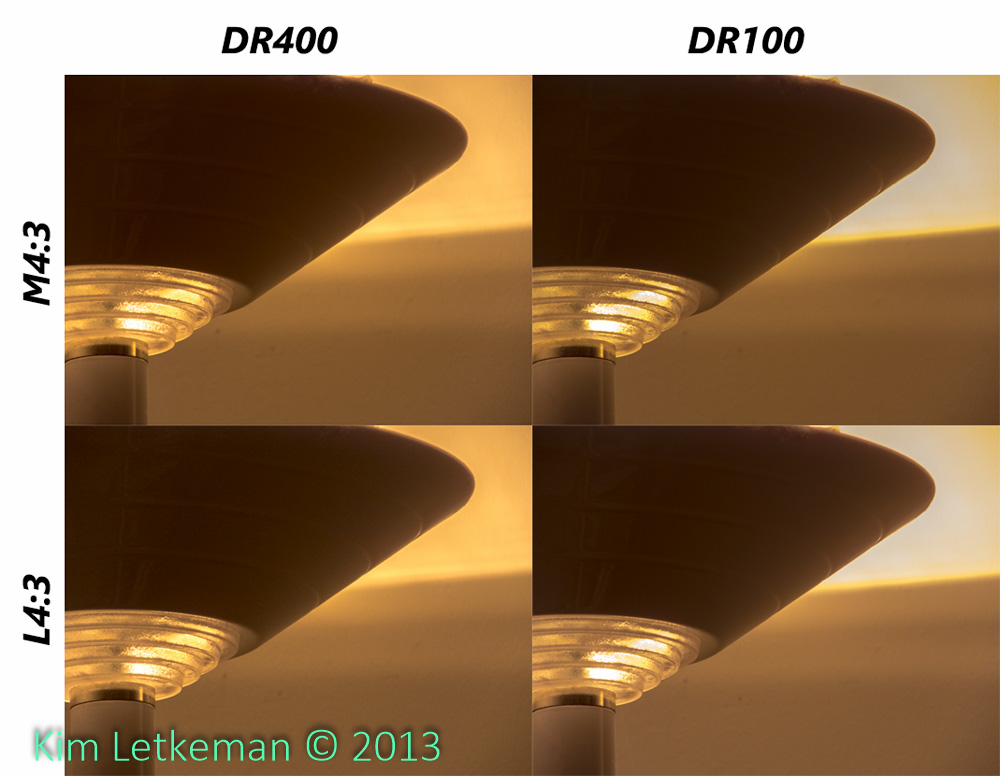Most people think that the EXR dynamic range trick was invented for sunlight drenched light or white objects and for skies. And they would be generally right. It helps both of those immensely.
But what is often forgotten is how much it helps night shots that include lights in them. And exactly how many interesting night shots do not include any lights? That’s right … the number of those is miniscule.
So since everyone has by now seen the recovery of skies that is possible in DR400 mode without severely underexposing shadows (which preserves details in the shadows etc.) I thought that this test should help you see the light by, well, seeing the light.
So I’ll lead with the punch line …
I hardly need to say this, but DR100 just plain sucks.
Anyway, I shot these at +2/3 EV so that I could see some detail in the lamp itself. There is so much light above, below and to the right that the lamp was otherwise a silhouette.For the comparison I used the RAF files, since raw has the largest latitude and allows the most recovery of detail in the highlights, and I processed the M4:3 DR400 image (top left) first. Then I applied the same settings to the other RAF files.
And we see three points of variance that are worth discussing …
First, the highlights are unrecoverable in the DR100 shots. Both M and L are ruined. Nothing to be done about it. The DR400 shots, on the other hand, both recover the highlights with no effort.
Second, the lamp, which is in shadow, is darker on the DR100 than it is on the Dr400. This is an obvious consequence of the flatter tone curve on the DR400 shots, and it is confirmed unequivocally.
Finally, there is a very subtle difference between the L and the M that does not really show up on my calibrated IPS panel, but does seem to be a bit more visible on the TN panel, which is calibrated but which is also a TN panel, ergo crappy :-)
But it is not very much and I chalk it up to the expansion caused by making everything warmer and brighter as TN panels are wont to do.
So the bottom line is obvious, just as it has been since 2009 …
DR400 works to flatten tone curves and preserve highlight details. And it is extremely effective. In L size, of course, you have to shoot 400 ISO to get DR400, but if smearing of many details does not bother you, by all means fill your boots. In low light you have to shoot 400 or higher anyway …
There have been recent “tests” published that attempt to prove the efficacy DR100, just as the efficacy of L size is trumpeted pretty heavily lately. As far as I am concerned, the times in which either of those is actually useful are so rare as to be a huge waste of energy. But as Forest Gump is wont to say …
